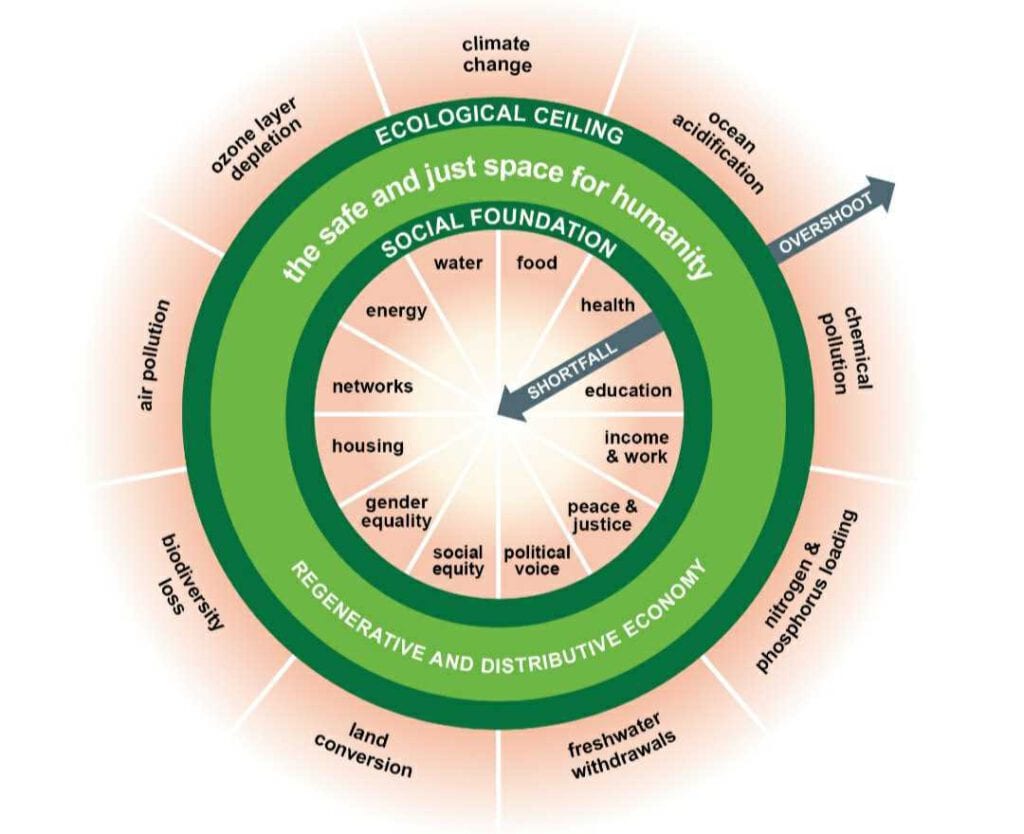Coronavirus has ensured economic crises across the globe, and governments far and wide are looking for a way out. Amsterdam has settled on a novel approach to help the Dutch capital out of the crisis — a doughnut. A doughnut economy, that is.
If you’re now wondering how a doughnut is good for anything other than curing a hangover, then yes, a doughnut model might be just the thing Amsterdam needs to get on its feet again after the pandemic.
What is a doughnut economy?
The mastermind behind the doughnut economic model is Oxford economist Kate Raworth. She rose to fame in 2017 with the book “Doughnut Economics: Seven Ways to Think like a 21-Century Economist.”
The idea behind the doughnut model is simple: to seek a balance between people and the environment. The goal is to provide a minimum standard of living for everyone while staying within the ecological limits of the planet.
Read More | Bubble Barricade fights plastic pollution in Amsterdam’s canals
Understanding the doughnut
The inner circle of the doughnut defines the minimum requirements to live a good life, derived from the UN sustainable development goals. These goals include clean water, food, education, health care, and housing. Anyone who is not meeting these requirements are living in the innermost hole of the doughnut.
The outside of the doughnut represents the planetary boundaries within which we need to live. These nine planetary boundaries are derived from earth-system science and include climate, freshwater, and biodiversity.
And as we all know, the middle is where all the good stuff happens. If you are living between the outer and inner rings of the doughnut, you are living within the safe and just space for humanity. This means, that to meet the needs of people and the planet, we must learn to live within the doughnut.
Why will Amsterdam use this model?
In the strategy published by the City of Amsterdam in March this year, they recognise that people worldwide are struggling to meet their basic needs, while several of the ecological boundaries are on the verge of collapse.
There has been concern that desperate attempts to get the global economy back on track after the pandemic, the world will see a shortfall in climate action and sustainable investments.
However, the City of Amsterdam believes that the best way to overcome the pandemic is by incorporating sustainable solutions in future plans. Striking this balance is in focus as the world seeks an end to the COVID-19 pandemic and strives to find a way forward.
Amsterdam is the first city in the world to make such a commitment. The author behind the model, Kate Raworth, believes Amsterdam could inspire many other places to adopt a similar approach. “As we all start thinking about how we will emerge from this crisis, let us seek to be holistic in how we reimagine and recreate the local-to-global futures of the places we live,” she says.
How will Amsterdam use the doughnut economic model?
Amsterdam has downscaled the doughnut model to fit the circumstances of the city. Future policy decisions will have to consider what it will mean for people in Amsterdam to thrive, how they can thrive within the natural habitat, how Amsterdam can respect people’s wellbeing worldwide, and how Amsterdam can respect the wellbeing of the whole planet.
What the future holds
It is still hard to imagine a post-pandemic world, but for Amsterdam, the doughnut model will be a part of that world. Who knows, if it all works out, maybe a doughnut will save Amsterdam from an economic and ecological crisis.
What are your thoughts on Amsterdam’s decision? Had you heard of the doughnut economic model before?
Feature Image: Dyah Ayuningrum/Pexels



